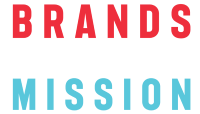It was good news, bad news. The Global Good Awards, a London-based organisation promoting socially responsible business, invited me to give a keynote address at this year’s awards ceremony, held in August. I was honoured to participate in this gold standard of recognising purpose-driven companies. However, in going over the programme, I got a wake-up call. The judges had dropped the category of promoting behaviour change – because they had received only a few entries and were satisfied with none of them.
This wasn’t about simplifying the programme. The judges kept categories on community partnership, employee engagement, sustainable supply chains, and the circular economy, each with three winners. They also added two awards for “champions of the COVID crisis,” for large and small organisations.
My life’s purpose is to help “brands on a mission” improve the world while still making a profit. More than any other part of business, brands are the masters of behaviour change. They’ve learned how to get customers to buy products or use them more. They know how to observe, listen to, and learn from customers, and respond to their needs by shaping products and messaging accordingly.
Yet brands have been holding back when it comes to truly executing and owning their social responsibility. Their marketers don’t realise the power they hold to solve a vast number of social issues through behaviour change. Few have applied their expertise and resources to causes beyond selling products. And when brands do attack a social problem, too often they offer only superficial efforts, rather than the full theory and tools at hand – or what I call coming up with purposeful solutions.
For most of these issues, it is just not enough to “educate” people about the right behaviour; if it was, everyone would be wearing masks, washing hands, limiting their alcohol consumption and wearing condoms when required. What is needed by brands that interrupt our daily lives is for them to find ways to trigger emotions and modify social norms – and these are areas where marketers are experts.
Brand Frameworks for Behaviour Change
I’ve mentioned a few success stories already in this Substack, without going into detail. Mission-based behaviour change is fairly close to what brand marketers already do. We know brands can get results if they go after social problems the same way they address commercial challenges.
Brand marketers work with a variety of frameworks to change behaviours. They typically start with a three-step process: cue, behaviour, and reward. The goal is to establish a cue for the new or corrected behaviour, specify the exact behaviour, and then offer a reward for carrying out that behaviour. The classic example is mint toothpaste, where a marketing executive in 1915 created messaging that alerted consumers to the residue on teeth after eating (cue), offered toothpaste to clean that residue, and included a tingling feeling in the mouth after brushing (reward).
While for some brands that’s enough, for those addressing socially responsible behaviours, they also have to overcome social norms discouraging choices. The other issue that brands face is that they might have part of their core advertising talking about a norm that is contradictory to the social issue that they might want to address in their purpose. And this is when having a system wide thinking will help. To do this, they need to think of social influencing as a whole. Take beer-drinking, an extreme but instructive example. Many cultures have a norm connecting beer binges with a fun, relaxing evening with friends. Beer brands want people to consume their products, but they know excessive drinking hurts everyone. So how can the brands overcome that norm?
Changing a norm involves three key steps: communicate expectations – to adjust or create the norm; increase observability – to activate the new norm’s pressure; and eliminate excuses – so people fear transgressing the norm.
For example, in January 2020, Heineken released a special pack of 31 non-alcoholic beers, one for each day of the month. Not only did it promote its Heineken 0.0, but it designed the beer with a conventional label, “brewed with a passion for quality” – worth drinking for its own sake, not as a retreat from the real stuff. Prominent advertising helped communicate expectations (non-alcoholic beers are acceptable) and increase observability (these beers won’t transgress norms about having a fun evening). The label helps to cue consumers that these beers are worth drinking, and that they can still relax and enjoy an evening with friends while drinking them without the undesirable side-effects.
As for eliminating excuses, AB InBev’s Aguila brand experimented with bottle caps redeemable for food, water, and cab services. No longer could partygoers blame lack of food or water, or difficulty getting a ride, for intoxication or its potentially disastrous consequences.
Another example is Knorr’s campaign against anaemia in Nigeria. Until recently, half of Nigerian women of reproductive age suffered from iron deficiency, with serious developmental consequences for their children. Public health authorities had urged women to consume more leafy green vegetables, but women complained that it made their stews tasteless.
Knorr was already selling bouillon cubes for stews, but in 2016 it reformulated the cubes to add iron. More importantly, it promoted those cubes as going well in stews with leafy green vegetables (communicating expectations and eliminating excuses). To drive home the message, Knorr’s advertisements showed mothers and teenage daughters, those most at risk of developing anaemia, cooking the vegetable-laden stews together – which connected the cubes to the norm of mothers teaching daughters to cook.
The ads explained the simple steps to boost iron and concluded with testimonials from celebrities and academics. After the campaign began, a randomised community study showed that women who had seen the ads were 41% more likely to add the vegetables than a control group who hadn’t. Knorr continued the campaign for months, adding visits to schools and other outreach activities.
As with conventional marketing campaigns, brands on a mission can start with pilots to validate hypotheses and determine effectiveness. Then they can expand to large audiences. Mass marketing is especially important for changing social norms because the norms depend on widespread acceptance. Only by addressing a norm widely is the behaviour change likely to happen in sufficient numbers to achieve the mission.
Behaviour change campaigns also need regular reinforcement and measurement. While expensive, that’s the only way to assess results, especially if the brand is looking to discuss its success with stakeholders and academics.
Of course, multi-brand companies also need to make sure that their brands aren’t working at cross-purposes. Dove soap, for example, was combatting conventional norms of female beauty while its sister brand, Axe, was reinforcing those norms to help sell deodorant to men. Unilever did address the problem, although later than most would have liked, and Axe replaced its advertising images.
One final concern: while many brand leaders have extensive expertise in changing behaviours, they tend to resist theories and models for tackling the challenge. They particularly neglect learnings from the public sector. However, this is the type of system change required for a brand to have a successful and inclusive transformational business model. While brand leaders like to follow their creative instincts, that can lead to confusion over the specific behaviour to be changed, and how. Some theory and modelling is essential to justify the expense of scaling up a pilot. The team spearheading the programme must clarify the essential, non-negotiable aspects of a campaign, including specificity on both the behaviour at issue and how it will be measured. Effective brand marketing needs depth, not just aspirational energy.
We need brands to take chances and apply their expertise to the world’s most pressing problems. We can start with repopulating the category of behaviour change at the Global Good Awards, but the real payoff will be much broader.



